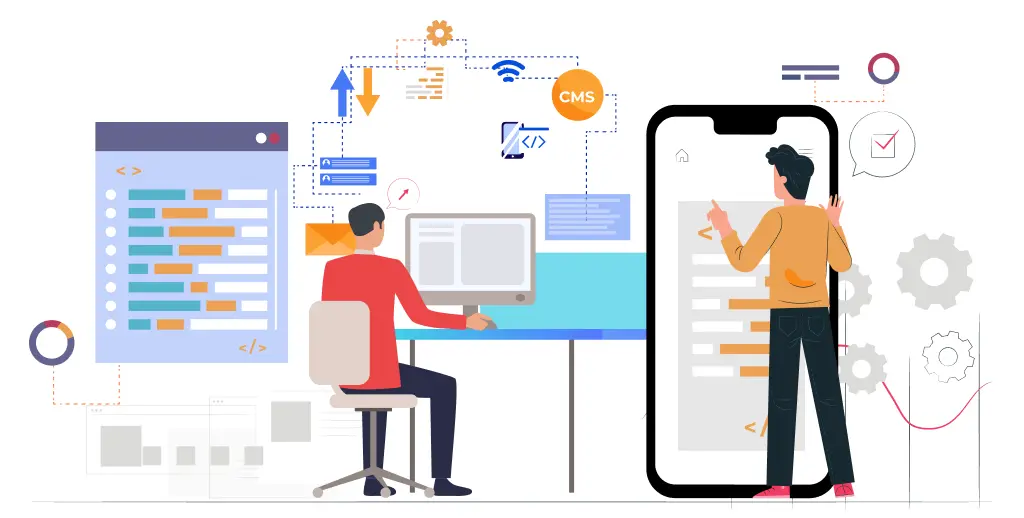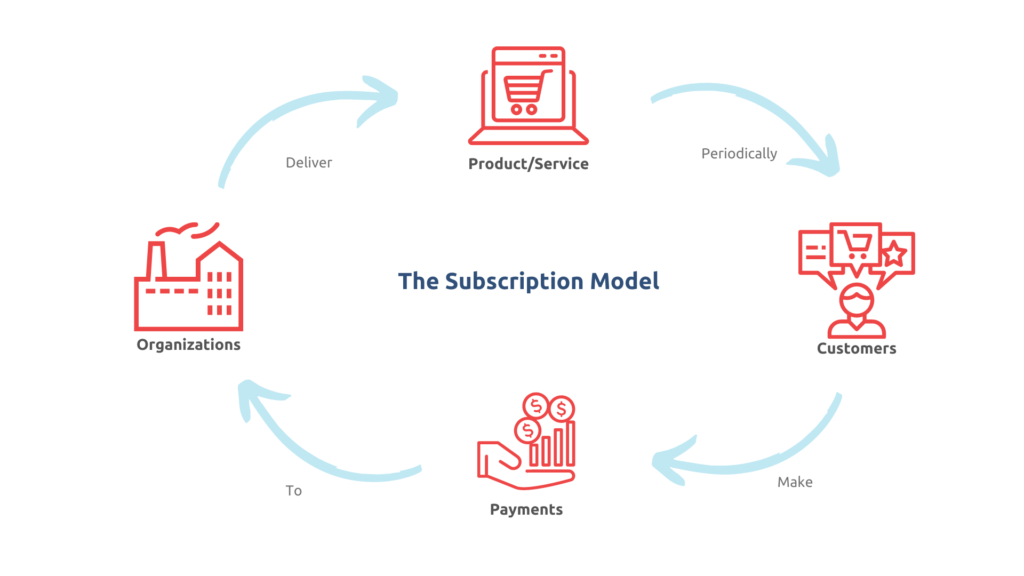
Why Multiple Income Streams Matter in Today's Economy
Before diving into specific strategies, let’s understand why income diversification has become essential rather than optional:
The Shifting Nature of Work
Traditional career paths are evolving rapidly. According to the Bureau of Labor Statistics, the average person will hold 12 different jobs during their lifetime. Meanwhile, automation, AI, and global competition continue to reshape industries at an accelerating pace.
Multiple income streams provide a buffer against these uncertainties while allowing you to adapt to emerging opportunities. Rather than placing all your financial eggs in one basket, diversification creates resilience and optionality.
The Compounding Effect of Multiple Streams
When strategically developed, multiple income streams don’t just add linearly—they create compounding effects. Revenue from one stream can fund growth in another, skills developed for one business can transfer to new ventures, and audiences built in one niche can be leveraged across multiple offerings.
Research from the Affluent Market Institute indicates that the average millionaire has seven distinct income streams. While correlation doesn’t prove causation, this pattern suggests that income diversification is a common practice among financially successful individuals.
The Online Advantage
The internet has dramatically lowered barriers to entry for creating multiple income streams. Unlike traditional businesses requiring substantial startup capital, many digital income streams can be initiated with minimal investment beyond time and effort.
Additionally, online income provides location independence, allowing you to generate revenue regardless of geographic constraints—whether you’re working from home or embracing the digital nomad lifestyle.

Six Proven Online Income Streams Worth Building
While countless online income opportunities exist, some have proven particularly effective and accessible. Let’s explore six strategic options, arranged from most active (requiring regular time investment) to most passive (requiring minimal ongoing maintenance).

1. Freelancing and Consulting Services
For professionals with marketable skills, freelancing and consulting represent straightforward paths to monetizing expertise. Popular categories include:
- Content creation (writing, editing, video production)
- Design services (graphic design, UX/UI, web design)
- Development (programming, website building, app creation)
- Marketing expertise (SEO, social media management, email marketing)
- Administrative support (virtual assistance, project management)
Implementation strategy:
- Identify your marketable skills and service offerings
- Develop a portfolio showcasing your capabilities
- Create profiles on relevant platforms (Upwork, Fiverr, Toptal)
- Network within your industry through LinkedIn and professional groups
- Implement a client acquisition system with both inbound and outbound approaches
Pros:
- Requires minimal startup investment
- Leverages existing skills and experience
- Provides immediate income potential
- Scales through rate increases and team expansion
Cons:
- Directly trades time for money
- Requires constant client acquisition
- Income can fluctuate with client needs
Success tip: Position yourself as a specialist rather than a generalist to command higher rates and attract better clients. According to a study by Freshbooks, specialists earn up to 43% more than generalists in the same field.

2. Digital Product Creation
Unlike service-based businesses, digital products allow you to create once and sell repeatedly. Common formats include:
- E-books and guides
- Online courses and workshops
- Templates and tools
- Printables and digital art
- Software and applications
- Stock photography, music, or video
Implementation strategy:
- Identify a specific problem you can solve for a defined audience
- Validate your product idea through surveys, interviews, or pre-sales
- Create a minimum viable version of your product
- Develop a sales and marketing system (landing page, email sequences)
- Gather feedback for continuous improvement and expanded offerings
Pros:
- Highly scalable with minimal marginal costs
- Creates semi-passive income after initial creation
- Builds authority in your field
- Can be automated through digital delivery
Cons:
- Requires significant upfront time investment
- May face marketplace competition
- Needs ongoing marketing to maintain sales
Success tip: Start with a small, focused product addressing a specific pain point rather than creating a comprehensive solution immediately. This approach allows faster market entry, quicker feedback loops, and reduced initial investment.

3. Content Monetization
Content creation has evolved from hobby to viable business model. Popular platforms for content monetization include:
- YouTube (ad revenue, channel memberships, Super Chats)
- Blogs and websites (display advertising, affiliate marketing)
- Podcasts (sponsorships, premium subscriptions)
- Newsletters (subscriptions, sponsored mentions)
- Social media platforms (creator funds, branded content)
Implementation strategy:
- Select platforms aligning with your strengths and audience preferences
- Develop a consistent content calendar focused on a specific niche
- Build audience through value-driven content before heavy monetization
- Implement multiple revenue models within your content ecosystem
- Analyze performance data to optimize content strategy
Pros:
- Builds valuable audience relationships
- Creates multiple monetization opportunities
- Generates portfolio of searchable/discoverable assets
- Establishes authority and personal brand
Cons:
- Requires consistent content production
- Often takes 6-12 months to reach meaningful revenue
- Subject to platform algorithm changes
Success tip: Focus on audience retention metrics over vanity metrics like view counts. According to YouTube’s algorithm documentation, watch time and engagement significantly outweigh raw view counts in determining content promotion.

4. Affiliate Marketing
Affiliate marketing involves promoting other companies’ products or services and earning commissions on resulting sales. Effective affiliate marketing channels include:
- Niche websites and comparison sites
- Email marketing to targeted lists
- Content platforms (YouTube, podcasts, blogs)
- Social media with engaged followers
- Webinars and online events
Implementation strategy:
- Select a niche where you have knowledge or interest
- Research products with strong affiliate programs
- Create valuable content addressing audience problems
- Integrate authentic product recommendations
- Test and optimize conversion strategies
Pros:
- Requires no product creation or customer service
- Often includes ready-made marketing materials
- Can generate passive income from existing content
- Allows testing of market demand before creating your own products
Cons:
- Commission rates and terms can change
- Requires trust-based audience relationships
- Competitive in popular niches
Success tip: Focus on genuinely helpful pre-purchase content that addresses buyer concerns and questions rather than purely promotional material. According to affiliate marketing statistics, 81% of brands leverage affiliate marketing, but conversion rates vary dramatically based on trust and content quality.

5. Membership and Subscription Models
Recurring revenue models provide predictable income and stronger customer relationships. Subscription offerings might include:
- Premium content libraries
- Community access and networking
- Coaching and feedback opportunities
- Software-as-a-Service (SaaS)
- Physical product subscriptions
Implementation strategy:
- Identify ongoing value you can provide to subscribers
- Structure membership tiers and pricing strategy
- Develop onboarding systems to demonstrate immediate value
- Create retention mechanisms and community engagement
- Implement feedback loops for continuous improvement
Pros:
- Creates predictable monthly revenue
- Improves cash flow planning and business stability
- Builds loyal community around your brand
- Often features lower customer acquisition costs over time
Cons:
- Requires consistent value delivery
- Needs systems to manage churn
- May involve complex management platforms
Success tip: Focus initially on retention rather than acquisition. According to research by Bain & Company, increasing customer retention by just 5% can increase profits by 25-95%, making existing member satisfaction your highest priority.

6. Investments and Asset Building
Beyond active income generation, building digital assets can create truly passive income streams:
- Dividend-paying stocks and ETFs
- Real estate crowdfunding platforms
- Cryptocurrency staking and yield farming
- Website flipping and digital asset acquisition
- Automated e-commerce operations
Implementation strategy:
- Allocate a percentage of income from active streams to investments
- Research investment options aligning with your risk tolerance
- Start with small positions to gain practical experience
- Develop systems for research and portfolio management
- Reinvest returns to accelerate compound growth
Pros:
- Creates income with minimal ongoing time investment
- Leverages capital rather than time for growth
- Builds long-term wealth beyond immediate income
- Provides tax advantages in many jurisdictions
Cons:
- Typically requires capital from other income sources
- Involves financial risk and market volatility
- Often delivers slower initial returns than active income
Success tip: Start small but start now. The power of compound returns means that even modest investments can grow significantly over time. According to historical market data, the S&P 500 has returned an average of about 10% annually before inflation, demonstrating the potential of consistent long-term investment.

Common Pitfalls to Avoid When Building Multiple Income Streams
As you develop your income portfolio, be aware of these common mistakes:
Spreading Yourself Too Thin
The most common error is attempting too many streams simultaneously, resulting in mediocre performance across all initiatives. Instead, focus on mastering one stream before adding another. According to productivity research, multitasking can reduce effectiveness by up to 40%, making sequential development far more efficient.
Neglecting the Foundation for Shiny Objects
Passive income sources are appealing, but most require either significant upfront work or capital generated from more active income streams. Maintain and optimize your foundational revenue while building more passive options.
Failing to Systematize and Delegate
As your income ecosystem grows, personal bandwidth becomes the primary constraint. Develop systems and consider strategic outsourcing to prevent bottlenecks. Tools like standard operating procedures, automation software, and virtual assistance can dramatically increase your capacity.
Mismatching Income Streams With Lifestyle Goals
Not all income streams align with all lifestyle preferences. For instance, high-touch consulting may conflict with full-time travel, while content monetization might require consistent production schedules. Select income models compatible with your desired lifestyle.
Starting Your Multiple Income Journey: Next Steps
Building multiple income streams is a marathon, not a sprint. Here’s a practical roadmap to begin your journey:
1. Conduct a Personal Audit
- Identify your most marketable skills
- Determine available time for income development
- Assess risk tolerance and short-term financial needs
- Define your ideal lifestyle and income goals
- List existing assets that could be leveraged (audience, expertise, content)
2. Select Your Foundation Stream
Based on your audit, choose a primary income source that can generate revenue quickly while building toward longer-term goals. Typically, this means either:
- Service-based work leveraging existing skills
- Employment that allows side-income development
- Content creation in a field where you have deep expertise
3. Develop a 12-Month Diversification Plan
Create a realistic timeline for adding income streams:
- Months 1-3: Establish and optimize foundation stream
- Months 4-6: Begin building audience and content platform
- Months 7-9: Develop and launch first digital product
- Months 10-12: Implement first passive income strategies
4. Build Systems for Sustainability
As you add streams, create systems to maintain momentum:
- Content calendars and production procedures
- Client acquisition and onboarding processes
- Product development and launch frameworks
- Financial tracking and reinvestment protocols
5. Join Communities and Find Accountability
Connect with others building multiple income streams:
These connections provide motivation, accountability, and practical insights from others on similar journeys.
Build Financial Freedom Through Income Diversification
The path to multiple income streams isn’t about getting rich quick—it’s about creating sustainable financial freedom through strategic diversification. By methodically building complementary revenue sources, you can reduce financial vulnerability, increase total income, and create more lifestyle flexibility.
Remember that income diversification is highly personal. Your optimal mix of revenue streams will depend on your skills, interests, resources, and goals. The strategies outlined in this guide can be adapted to virtually any starting point and professional background.
Ready to begin building your multiple income ecosystem? Schedule a personalized income strategy session to develop a customized roadmap aligned with your unique skills and goals.
Waqar Abro is a Digital Nomad Mentor and Remote Work Strategist who has helped hundreds of professionals transition to fulfilling location-independent careers. With over a decade of remote work experience across 30+ countries, Waqar combines practical knowledge with strategic insight to accelerate remote work success.
